What to do when it goes bang
Knowing how to handle emergency situations can keep your boat afloat when you lose your mast or steering
Many years ago I was sailing from South Africa to Gibraltar. We were halfway between Saint Helena Island and Ascension Island when the rudder broke off. Earlier, we had felt a little give in the wheel and thought there was a chance it might break so I went for a swim. I drilled a hole in the rudder and threaded a line that was secured to a cleat on the stern of the boat.
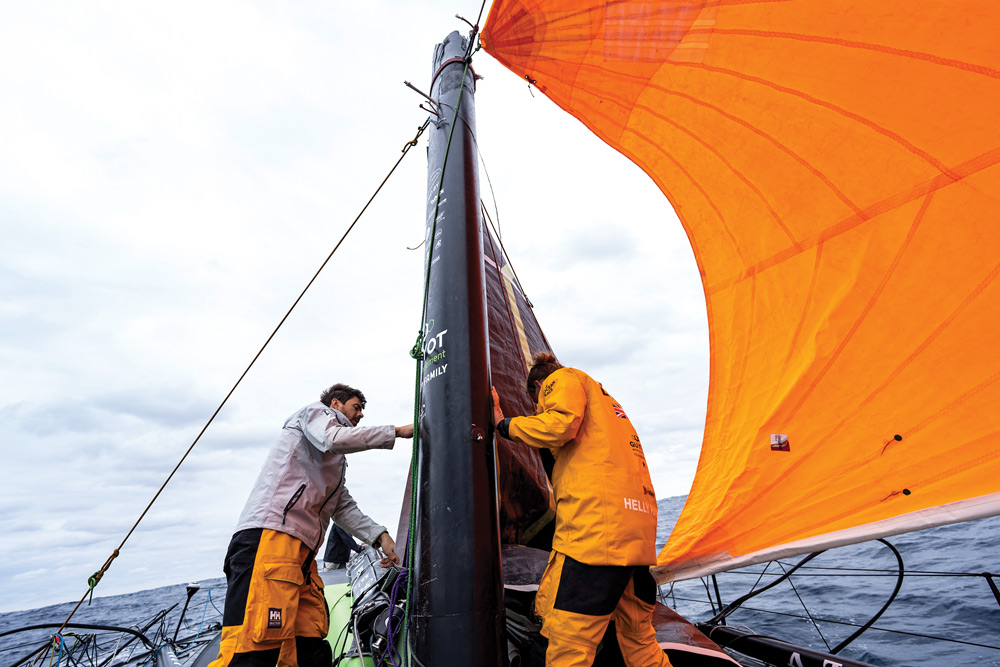
Recent events in the world of offshore racing have me thinking about masts breaking and rudders coming unglued and the list of other things that can go wrong at sea. I wondered how prepared we all are for the inevitable if we are planning on sailing some serious offshore miles. It’s almost impossible to completely avoid breakages on a boat, but there is a lot that you can do to mitigate problems.
Recently, two major offshore ocean races representing both ends of the technology spectrum have made headlines for dismastings and sinkings. The Ocean Race is at the extreme end in terms of high performance and technology, while the Golden Globe Race in which sailors use technology from 1960s is clearly at the other end. The Golden Globe is a retro race based on the original singlehanded, nonstop race around the world that took place in 1968.
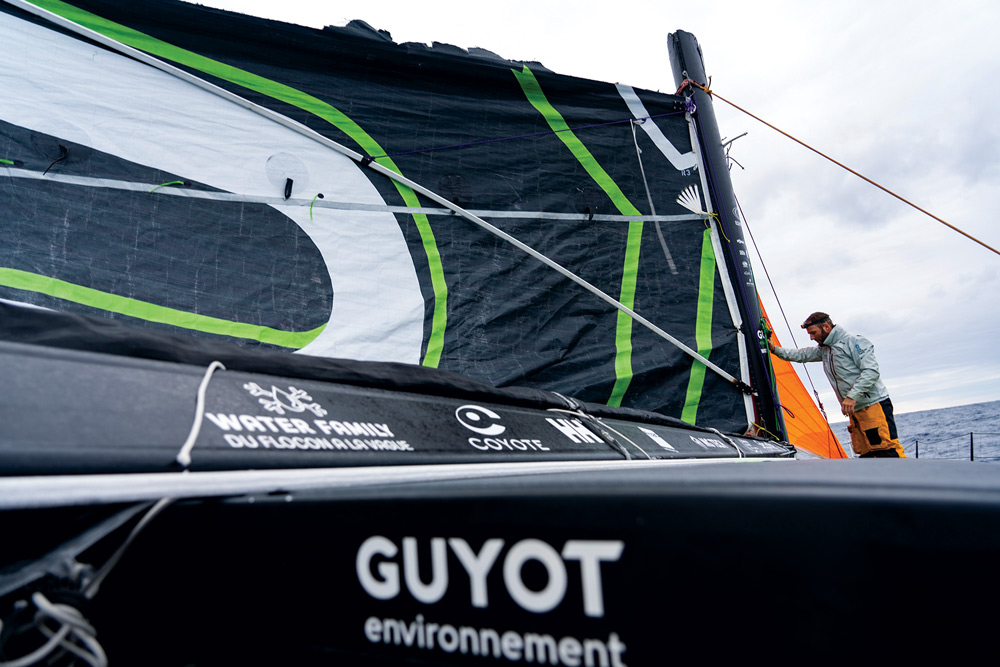
Hull damage is not something that’s easy to fix at sea. While racing aboard Drum in the 1985-1986 Whitbread Race the port hull started to flex and we did an at-sea repair that included some floorboards trussed with spinnaker poles and crew on a daily rotation sitting up in the bow monitoring things. It worked.
This damage on the IMOCA 60s can be chalked up to yacht designers and engineers pushing the boundaries of technology, although the accidental jibe on Biotherm was crew error and perhaps a little extra wind in Table Bay. These kinds of things can be expected and the boats are very complicated and hard to effect repairs while underway, but it shows that as technology progresses dealing with damage at sea requires a team of very experienced sailors and a shore team to help set things straight.
Damage in the Golden Globe Race was a little different, in part because the boats are of an older generation, and they are sailed singlehanded through some of the worst weather on the planet. It’s hard to predict where things might go wrong because the boats look so sturdy and are able to withstand some tough conditions. The boats are put through a tough screening process and safety is the No. 1 priority of the race organizers.
A good hull sounding and thorough rig survey can go a long way to ensuring a safe passage, but an accidental 360-degree rolling while you are asleep is another matter altogether. British sailor Ian Herbert Jones aboard his Tradewind 35 was weathering some bad conditions in the South Atlantic when he was rolled and dismasted. He was also banged up pretty badly with a gash to his head which brings me to another part of being damaged while at sea. Human damage.
French sailor Bertrand de Broc was participating in the Vendée Globe race when his boat slammed off a large wave and as it crashed down Bertrand had his tongue out and he managed to bite it off. There was only one thing for him to do and that was to sew it back on and that’s what he did, so remember when you are preparing your medical aid kit to include a sharp needle and some thread. (Turn to Technique, page 26, for how to handle medical emergencies.) I haven’t seen Bertrand in a while but the last time I last saw him his tongue was back in full working order.
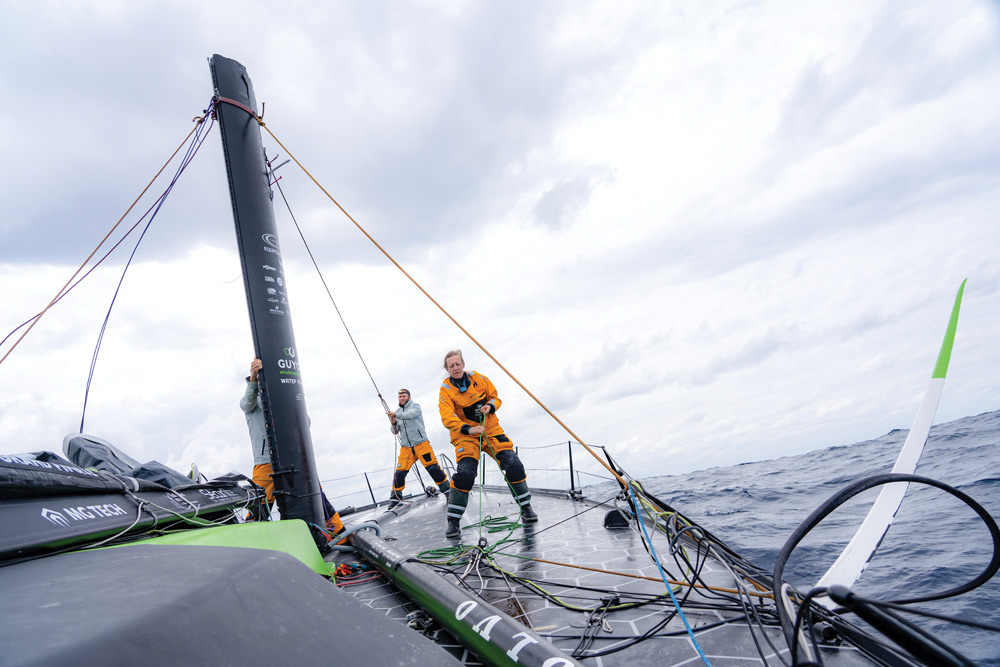
He had been taking aspirin for pain and had forgotten to mention this to the doctor who might have told him that aspirin is a blood thinner. Viktor awoke in a pool of blood but he managed to text an extremely worried doctor that he was fine. Funny thing about that story is that Viktor had his best 12-hour run of his circumnavigation while he was passed out on the cabin sole.
In order to have a successful passage it’s all about preparation. There are a number of parts of a boat that need to be fully assessed, the hull being the most important. Even if you should lose everything else you still need the hull to stay afloat; it’s a much better option than a life raft. You should have your boat sounded by an expert because all boats are different and different areas of the hull will sound different because of the various hull thicknesses.
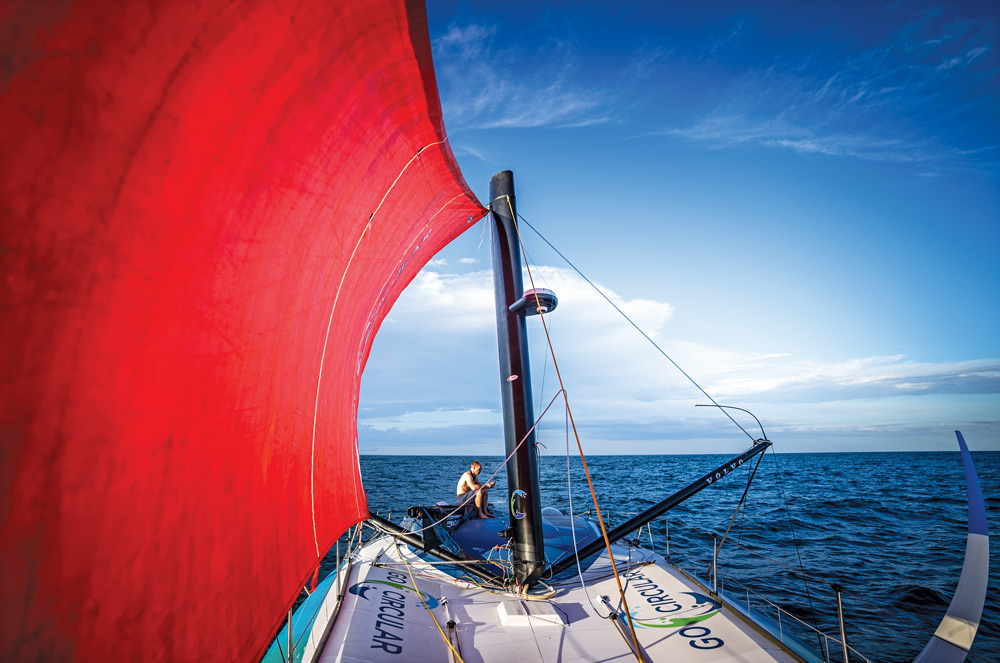
A couple of years ago I was sailing from Maine to Bermuda and there was a loud bang (in the middle of the night of course). We were in some testy weather and I noticed that the rigging was all slack. Upon a lot of further inspection I discovered that the mast had pancaked on itself inside the deck partners (it was a carbon fiber mast) and that accounted for the slack rigging. We used the halyards to shore up the rig and made it to Bermuda safe and sound.
Sails are a little tricky but nothing that you can’t inspect yourself. Most sails split at the seams so check the stitching carefully. The thread is the first to rot out and that’s where things can go wrong. You can also check the fabric. If your sails are Dacron take a needle and poke some holes in it. If the yarns part for your needle the fabric is probably OK. If there is a bit of a cracking sound that means that the fabric has been sun damaged and brittle and won’t have much life left in it. A good sailmaker can help you but I think that this is one area that you can do yourself.
Checking the appendages is a bit trickier. Lift the floorboards and check the keel bolts. A surveyor can survey the rest. Speaking from experience, I would suggest dropping the rudder out and giving it a close inspection. The electronics are important but not that important. My first circumnavigation was done with a sextant. I am not suggesting that you bring a sextant and sight-reduction tables because basic electronics are usually very reliable. If you lose your GPS make sure that your VHF is fully charged. You can always ask a passing ship where you are.
Anyone that heads offshore should expect some kind of damage to happen and be prepared for it, but the best advice that I can give is don’t panic. Necessity is the mother of invention. You will figure it out, but don’t forget to take along a sharp needle and some thread, just in case you bite your tongue off, and a sharp blade and a camera for your Instagram or TikTok post if you need to do self surgery.
What to do when your mast goes bang!
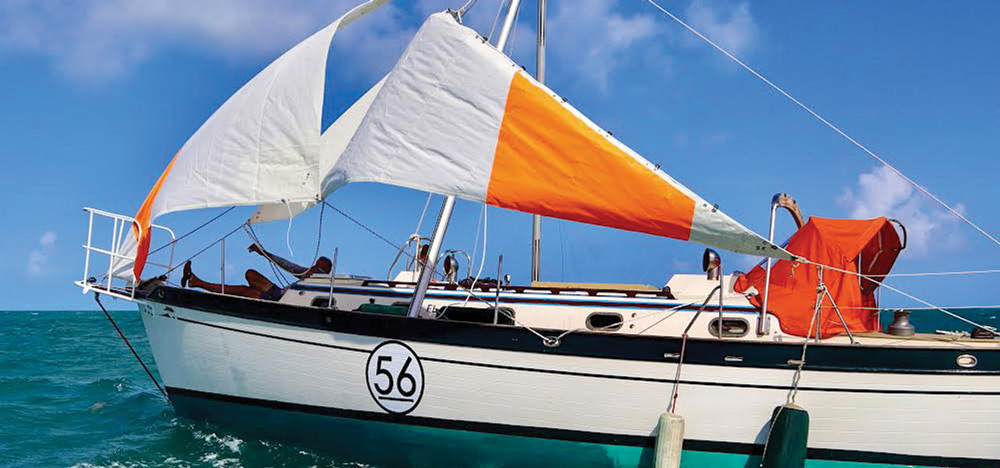
Don’t start the engine and put the boat in gear as there will be a mess of lines and rigging in the water.
You will need to cut away not only standing and running rigging, but the mainsail as well. Powerful bolt croppers and a hacksaw with plenty of blades will be needed to cut away the rigging. If you can remove the boom and large parts of the mast, it’s a good idea to bring them aboard to be used when setting a jury rig. You most likely won’t be able to salvage the mainsail as the bolt rope will be jammed in the mast pieces. Likewise the foresail if it is set with a headfoil.
If the mast is carbon fiber, wear gloves as there will be exploded shards of carbon fiber everywhere. If you are unable to cut through the rigging, especially if it is rod, you may have to secure the mast to the side of the boat.
Rigging a jury rig is much easier if there is a stub remaining. A spinnaker pole or the boom can be raised to fly a sail from. At this point, you are not worried about center of effort so the new mast can be located anywhere on centerline that is easiest to rig a headstay and backstay. Choose a sail that will fit the new mast, which most likely will be a small jib or staysail. To maximize sail area it’s a good idea to fly the sail sideways, with the foot of the sail becoming the luff.
What to do when your rudder goes bang!
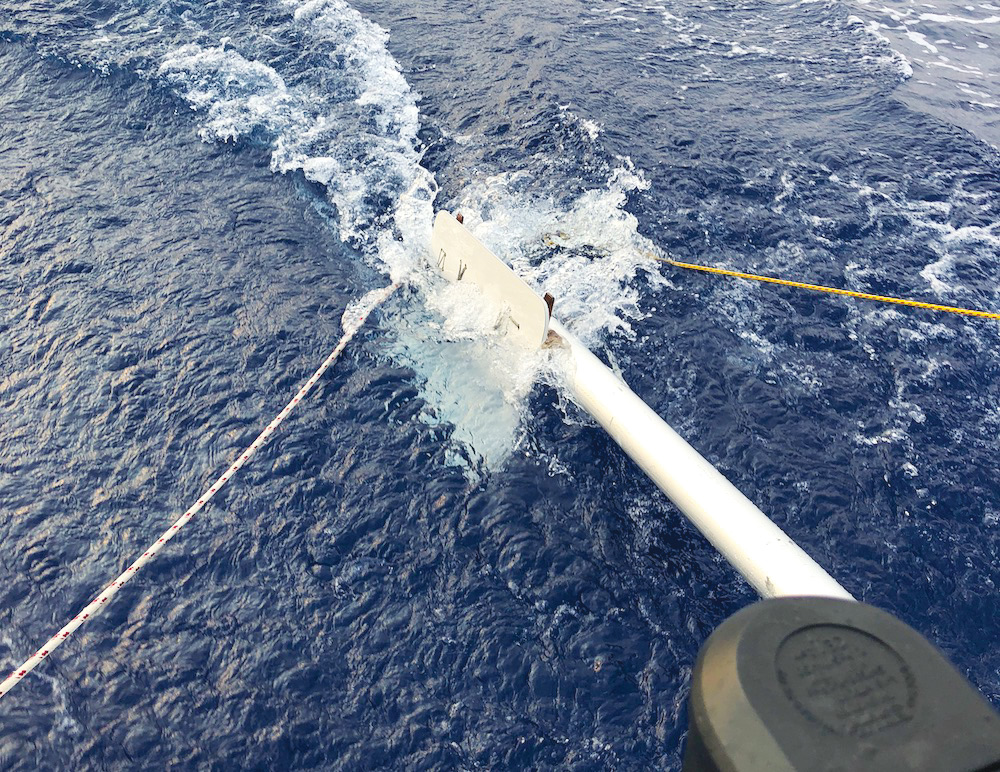
The boat will immediately round up, and you will need to get control of the boat. If you are sailing in calm conditions, merely dropping the sails until you can jury rig a way to steer is fine. In rougher conditions you may need to set a storm anchor from the bow to maintain a safe position in a seaway. If the rudder has broken off, it is important to first check for damage that can cause flooding.
There are three main ways to steer a boat without a rudder. You can steer by trimming the sails and using crew weight. You can jury rig a rudder using spinnaker poles, floor boards or locker doors. The most effective way is to use drag steering, by towing a drogue, bucket or sail bag rigged to a bridle system that is led to winches port and starboard.
If you have lost steering but you still have a rudder you can use your emergency tiller. This stubby tiller fits to the top of the rudder stock usually located just behind the wheel. It’s awkward and difficult to use because of limited space so rigging a rope purchase to the aft winches or aft cleats makes it easier. It’s a good idea to locate and install your emergency rudder before setting off so you know how to attach and use it quickly in case of steering failure.
What to do if the boat goes bang!
Hitting an underwater object when sailing at full speed can be a life threatening emergency. Large marine mammals such as sunfish and whales can stop a boat, but hitting a semi submerged shipping container can sink your boat.
Sailing off Newfoundland on Leg 5 of The Ocean Race, 11th Hour Racing was racing at speeds near 30 knots when it struck what skipper Charlie Enright said was a suspected megafauna or whale. The boat came to a sudden stop, throwing the crew forward and injuring two sailors. After checking the boat for possible damage and speaking with doctors on shore, they continued racing. They also reported the strike to the International Whaling Commission.
The first thing to do after striking an object is to make sure all crew are safely onboard and unharmed. Immediately assess the boat for damage. The shock load can cause damage to sails and standing rigging. Check the keel bolts for possible damage. Open all lockers and the engine compartment to check for possible hull damage that could cause sinking. If all is well, it’s best to set off under reduced speed to ensure nothing unseen has been damaged.
As in all emergencies, issuing a VHF pan-pan call, which is used in non-urgent situations and alerts nearby boats that you are disabled and may need assistance, is also good idea.

Comments